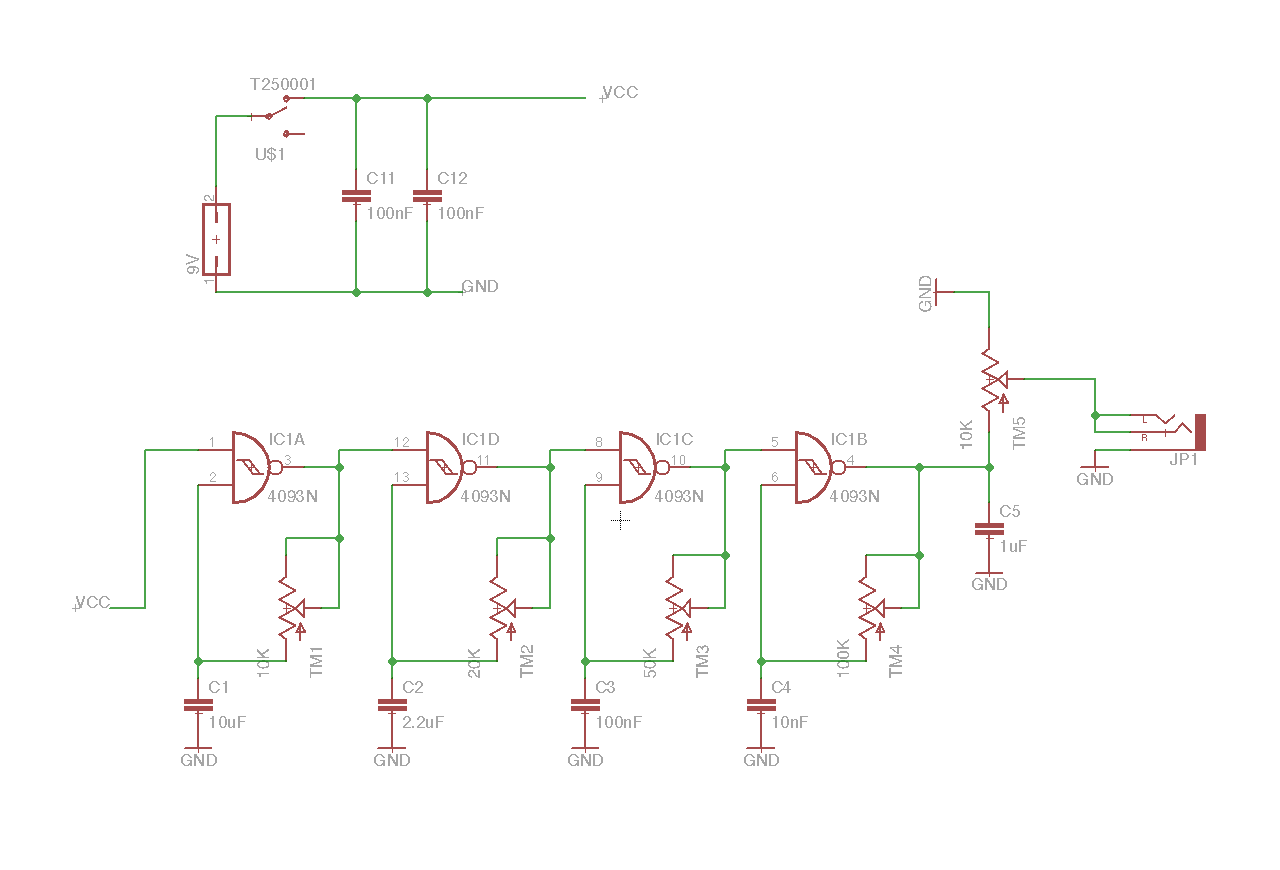These boards are for a workshop I ran at Resonate 2016 called “Volt, Amp, Synth & Sound”
I really wanted to make a simple workshop about electronics that all beginners could understand. It was a fun little exercise in making an intuitive and approachable way to learn something that is usually thought of as difficult. I usually teach workshops on code and that means you have to spend a lot of time getting peoples machines set up correctly, mucking around with compilers, remembering how to type on German keyboards, all kinds of painful. This workshop was one of my favorites I’ve ever taught because there was no laptop time. Not a single second. Just talking and then soldering and then making some sound. Sound and the production of it lend themselves wonderfully to teaching the basics of electronics because there are so many great and intuitive analogies to draw: volume to voltage, frequency to oscillation, capacitance to time. I may never use an LED to illustrate electronics again :)

NANoiseD
The core of this chip is the 4093. It consists of 14 pins and has four CMOS blocks internally embedded inside its package. These blocks are called gates, here these are termed NAND gates. That NAND is actually logic: the output for each gate is positive if both or either of the inputs is high. In the NANoiseD the gates are all tied together in a loop: output of one becomes the input for the next. All gates need both inputs on to send off nothing to the next gate. One is sometimes on because it’s tied to the previous gate. One is usually on because it’s tied to the output but is sometimes off because it’s tied to the potentiometer. What you get is a nice rich controllable noise, fun to play with, terrific for abusing your co-workers/classmates.

FFS
This is both a reference to the 556 that is the heart of this synth and a play on the British-ism “For Fucks Sake”. The 556 is a dual 555 timer, meaning there’s two of them packed into the same package. This synth actually adds a 555 to the 556 to allow the user to create a beat, a pitch, and an undertone. The potentiometers control the duty cycle (how long the beat is on and off), the frequency (how often it goes on and off), and then the pitch and undertone of the sound when the beat is on.
ffs
Finally, though it’s not shown in the video, we built amplifiers out of an LM386 and some 8ohm speakers that let people make a fantastic cacophony in the workshop.
All of the schematics for the workshop are on the github repository. Please take them, build them, change them, enjoy them.